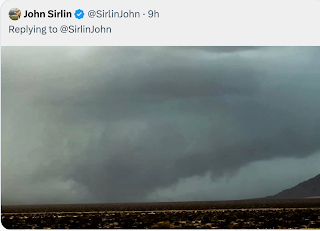Guest Commentary by Jim Gandy
Jim Gandy and I have been friends for nearly 30 years. We both worked for WKY TV in Oklahoma City and Jim was one of WeatherData's earliest employees. Jim is now the chief meteorologist for WLTX TV in Columbia, SC. Given that 86% of the deaths in Friday and Saturday's tornadoes were-mobile home-related, I have asked him permission to publish this commentary on mobile homes and tornadoes:
PIGS CAN’T FLY, BUT MOBILE HOMES CAN
This is not about bashing mobile homes or the mobile home industry. Mobile homes, or manufactured housing as many in the industry like to say, provide an affordable alternative to traditional homes for many families. Even I considered buying a mobile home early in my career in Oklahoma City, the most tornado prone city in the world.
However, many who buy mobile homes are not aware of the risks and the salesman is not going to point them out unless he can make money off of it. When I was considering my move to a mobile home it included construction of an underground tornado shelter. My mobile home and shelter would have been stocked with NOAA Weather Radios. The shelter would have had emergencies supplies and communication devices. In addition, it would have had a mechanical wrench to open the door if it was covered by debris.
I recently received an email from someone who wanted to know if the bathroom was a safe place to go in a mobile home as a tornado approached. Truth of the matter is that there is no safe place to go in a mobile home during a tornado. That is why you are encouraged to leave and seek more substantial shelter.
If you live in a mobile home, the first thing to do in preparing for severe weather is to make sure the home is tied down securely. A professional should do this and the home should be tied down to withstand at least 100 mph winds. This will help keep the mobile home from flying away in a severe thunderstorm. However, this does not make it safe in a tornado or hurricane.
Next make sure there is a substantial shelter nearby. This can be a designated shelter, traditional home, or a constructed storm shelter. Make sure you have a NOAA Weather Radio with a battery back up and know how to use it. Know where you live and the surrounding communities so that you will know how close the severe weather is to your area.
Finally, have a plan and practice it with the entire family. When severe weather strikes you have to know what to do automatically.
There is only so much you can do to secure a mobile home. The tie downs are a must, but they do not make it safe in a tornado or hurricane. Here winds can exceed 100 mph and the ties may fail. The home can be totally destroyed even if the ties hold.
I remember a case near Lawton, Oklahoma and I think it was in the early 1980’s. A tornado hit a mobile home that was tied down to withstand 110 mph winds. The tie downs did their job and the mobile home did not fly away. However, it was completely destroyed and the person inside was killed. The tie downs kept the home in place, but the winds ripped apart the home as the seams broke. Thus, it literally disintegrated in its place. The debris flying around the mobile home were like missiles and were deadly. The tie downs could be plainly seen in the aftermath holding the debris in place.
Therefore, you should not have any illusions about the safety of mobile homes in severe weather. They can be a dangerous place to be. However, if you plan for such events you can rest a lot easier.
Consider this piece of advice. Move to more permanent shelter whenever a tornado watch is issued. Tornadoes can occur at any time and you may not have time to seek proper shelter. Then return to the home when the danger has passed. Never try to ride out a direct hit from a hurricane in a mobile home. The danger again is too great.




Comments
Post a Comment